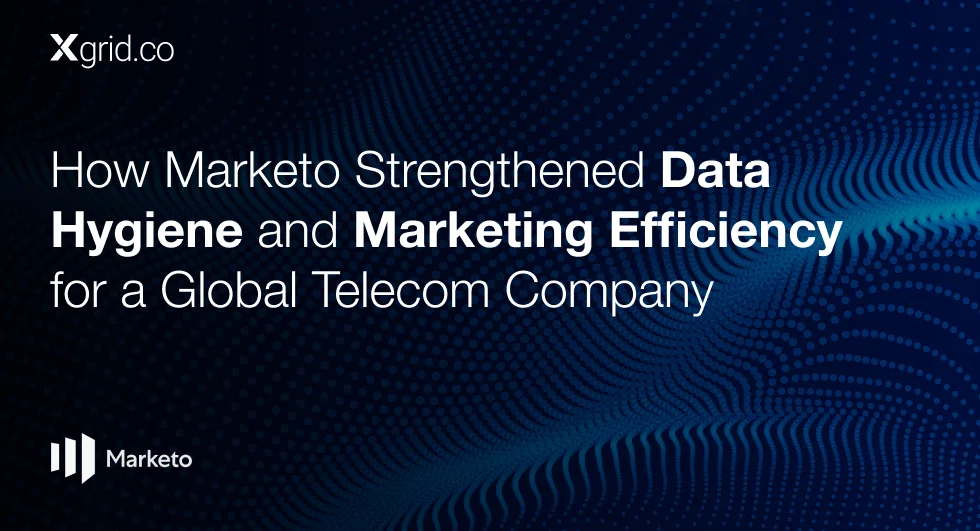Optimizing Marketing Efficiency with Marketo: AJ Sedlak’s Insights
Q: AJ, could you tell us how you came across Marketo and your views on this platform? What makes Marketo stand out compared to other platforms?
A: My first experience with Marketo dates back to around 2009 when I was using Eloqua. At the time, Marketo was gaining a lot of attention for its sleek, user-friendly interface. My company was using Eloqua E10, and we later switched to Marketo. In 2018, when I worked for Polycom, which was an Eloqua shop, we were acquired by Plantronics, a company that used Marketo. As I took over the marketing automation team, we had to decide on a unified platform, and Marketo turned out to be the right choice.
One of the most impressive features of Marketo is its production efficiency. The platform is hard to beat when it comes to creating repeatable, standardized programs quickly. This efficiency is mainly due to its use of tokens and program templates. For teams with a high volume of campaigns, Marketo’s ability to streamline production scales up their impact significantly. This way, the team can focus on more strategic, interesting work instead of spending too much time on repetitive tasks.
Q: You’ve mentioned production efficiency. How do you approach team alignment to achieve maximum throughput across an organization?
A: When it comes to team alignment, there are several factors to consider, depending on your organization’s approach to marketing automation. I’ve managed both centralized and distributed teams. In a centralized model, a dedicated team handles all marketing operations. On the other hand, in a distributed model, individual departments or regional teams might create their own campaigns, particularly for specific events they’re running.
There isn’t a “one-size-fits-all” approach. The choice between a centralized or distributed model depends on the organization’s nature, budget, available talent, and the complexity of the work involved. Generally, as an organization matures, it tends to move towards a more centralized team structure. A centralized team offers consistency, scalability, and flexibility, especially when team members take time off or transition to new roles.
Strategic alignment also matters. The teams requesting work must align with the company’s objectives. The marketing operations (MOPS) team should provide insights into the effectiveness of tactics and programs, giving feedback to marketing teams. This feedback loop allows for adjustments, enabling teams to focus on what delivers the most impact. It’s crucial for marketing stakeholders to set aside their egos and admit when a strategy isn’t working as hoped. This level of maturity and openness to change helps maximize resources and investment.
Q: Aligning stakeholders can be challenging, especially when egos are involved. How do you navigate this process?
A: It’s definitely challenging, as people naturally become attached to their ideas. One concept I’ve seen gaining traction is the idea of treating marketing operations as a “product.” In this approach, we aren’t just an execution team taking orders from stakeholders. We take all incoming ideas, whether from stakeholders or within the team, and assess them for their potential impact.
We treat these ideas like a backlog in a scrum process, prioritizing based on the likely impact, the time required for execution, and dependencies across the organization. By involving stakeholders in this prioritization process, they gain visibility into what is being worked on and understand why certain initiatives take precedence. This transparency helps stakeholders see that when they say yes to one project, they’re also saying no to others.
This approach shifts the focus to delivering the best outcomes for the business rather than pushing individual agendas. It aligns everyone with the overall impact and encourages a collective decision-making process.
Q: You’ve worked on regional campaigns and segmentation. How do you handle regional segmentation effectively?
A: Segmentation is a nuanced topic. There has been a shift from sending mass emails to more targeted, relevant communication. Proper segmentation helps reduce unsubscribes and increases the effectiveness of your messages. It ensures you’re sending the right content to the right audience, resulting in better metrics like opens, clicks, and conversions.
However, there’s a balance to be struck. Over-segmentation can lead to diminishing returns. The key is to find the right level of granularity that makes sense for your business. Start with basic segmentation and use campaign insights to refine your approach. Marketo’s dynamic content is helpful here, but it requires careful planning. Before investing time in creating multiple segments, ensure that each segment is large enough to justify the effort.
For personalization on a large scale, it’s not fundamentally different from a small-scale approach. It’s about identifying the patterns in your data, understanding which segments warrant specific messaging, and leveraging demographic and behavioral information to tailor the communication. Finding the right scale for your business comes through experimentation and progressively building on your successes.
Q: What are your thoughts on dynamic content and progressive profiling in Marketo? Any best practices or pitfalls to avoid?
A: Dynamic content in Marketo is extremely valuable, particularly when it comes to handling variations like language differences within the same communication. However, Marketo’s built-in segmentation limits dynamic content unless you venture into velocity scripting. When planning dynamic content, think ahead about the segments you want to create since you only have so many to work with.
Progressive profiling is useful if you regularly publish content and expect visitors to return. It allows you to gather more relevant information over time without overwhelming users. However, don’t use progressive profiling just for the sake of collecting more data. Only ask for information that you can use effectively, as each form represents a potential friction point that could deter some visitors.
Q: Marketo is often described as industry-agnostic. Do you think it’s more suited to specific types of companies or industries?
A: While Marketo is marketed as industry-agnostic, it tends to align more with B2B marketing due to its focus on lead lifecycle and lead routing. For companies not concerned with these aspects, other tools might offer more relevant features at a lower cost. Marketo is not cheap, so paying for capabilities you don’t need isn’t a good investment.
Additionally, Marketo might not be the best fit for businesses with extremely large user bases, like SaaS companies. Managing large databases can get very expensive and resource-intensive. In these cases, companies need to evaluate whether to use Marketo alongside other tools that handle high data volumes more efficiently.
Q: How can marketers justify the investment in Marketo to their CFOs, especially when cost-cutting pressures are high?
A: The key is to articulate the value that Marketo provides beyond its price tag. It’s not just about the annual cost but also about the capabilities it brings to the table. When I had to justify a Marketo renewal with my CFO, I outlined not just the platform’s cost but also what we would be sacrificing if we switched to a simpler, less expensive solution.
It’s important to educate decision-makers about what you can do with an advanced platform like Marketo that might not be possible with a cheaper alternative. If you make a compelling case but the decision still leans toward cost-cutting, that’s a business choice. Your job is to provide the information and the potential impact of that decision. Sometimes, even if the choice isn’t favorable, it’s your responsibility to execute it professionally.





